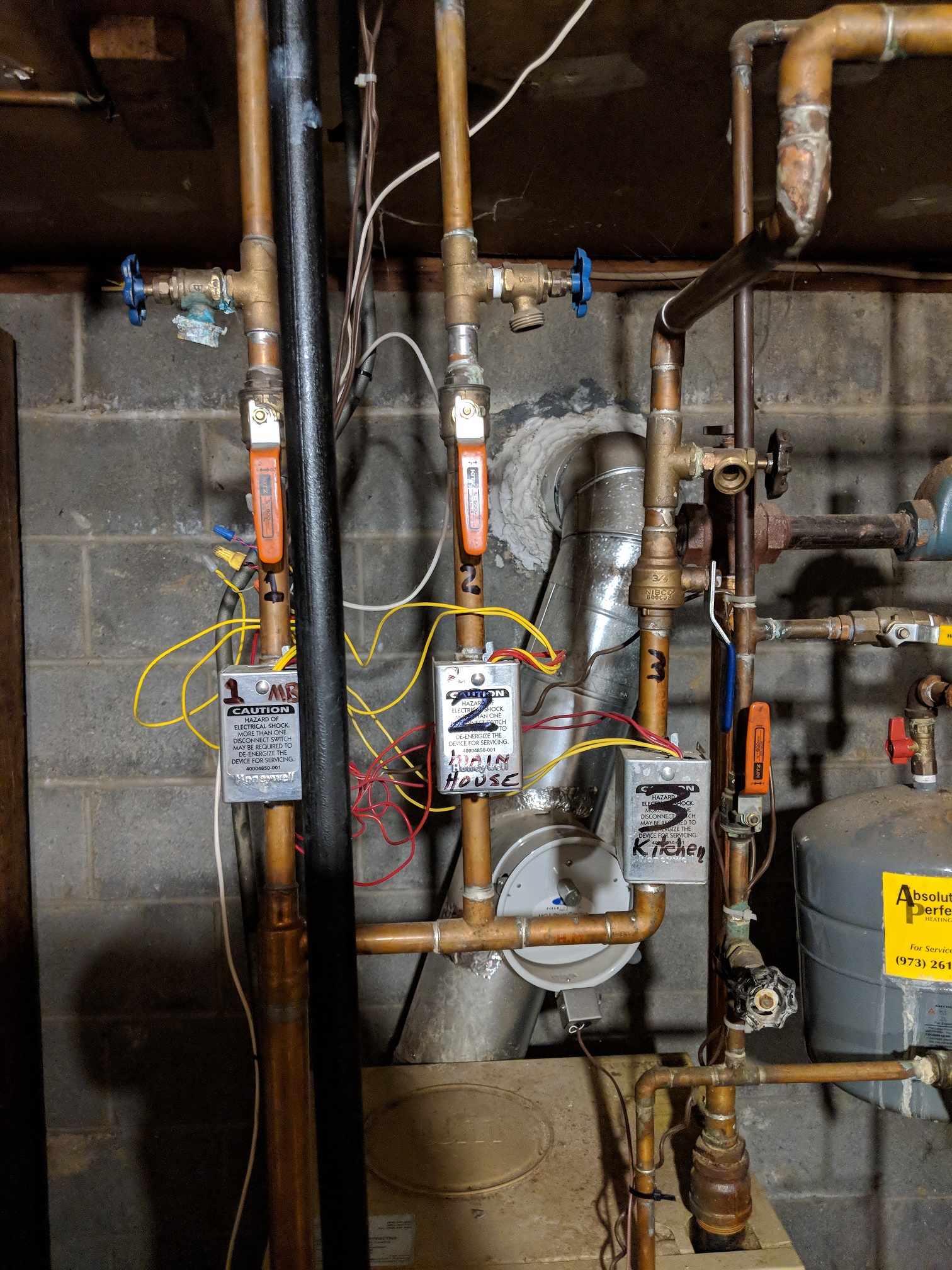I have a gas fueled (converted from oil just a few years ago) boiler in my basement with an integrated tank-less water heating system for the showers/taps/etc. The output is three zones as shown in the picture below. Only zones one and two ever get used. Zone 3 maybe twice a winters gets turned on. Not shown in either picture is a drain spigot.
To describe what is happening here: The water supply comes from outside and splits. Half goes directly into the tank-less water heater part of the boiler and the other half move through the PRV and mixes in the air scoop with the return pipe from all three heating zones. There is one pipe and throughout the house the zones all drain into it. This enters the heating part of the boiler. One the left side of the boiler the water moves through a circulator (not shown) and then is split for each of the three zone valves. Each line after the zoning motor has a shutoff valve and a spigot.
Last year (late winter) I noticed my hot water heating pipes sounded like a river was flowing through them and efficiency was reduced. I had a plumber come out and he bled the system and recharged the expansion tank (hadn't been done since I bought the house three years ago). He also replaced the bleed valve on top of the air scoop. Unfortunately the baseboard radiators do not have any bleed valves (project for next summer).
This past weekend I was installing an ecobee and was shutting off the boiler periodically to do some wiring etc but now the pipes sound like a river again.
- What could be causing the reintroduction of air into the system?
- How do I bleed my system?
UPDATE: I went down to check the expansion tank and on a lark loosened the bleeder valve cap a little more (it wasn't previously tightened down) and I got a huge spurt of air. Maybe making it a little more loose will help the system.


